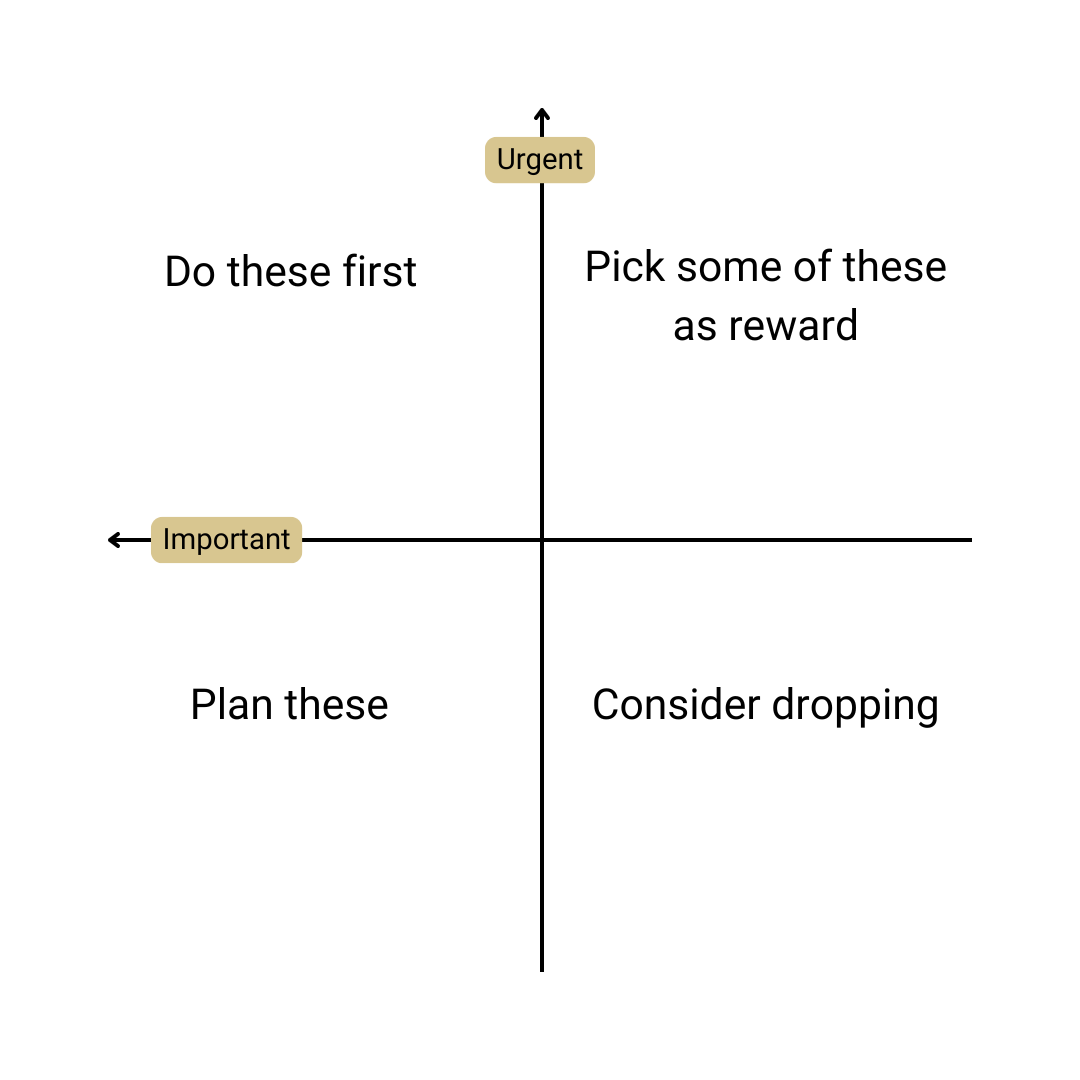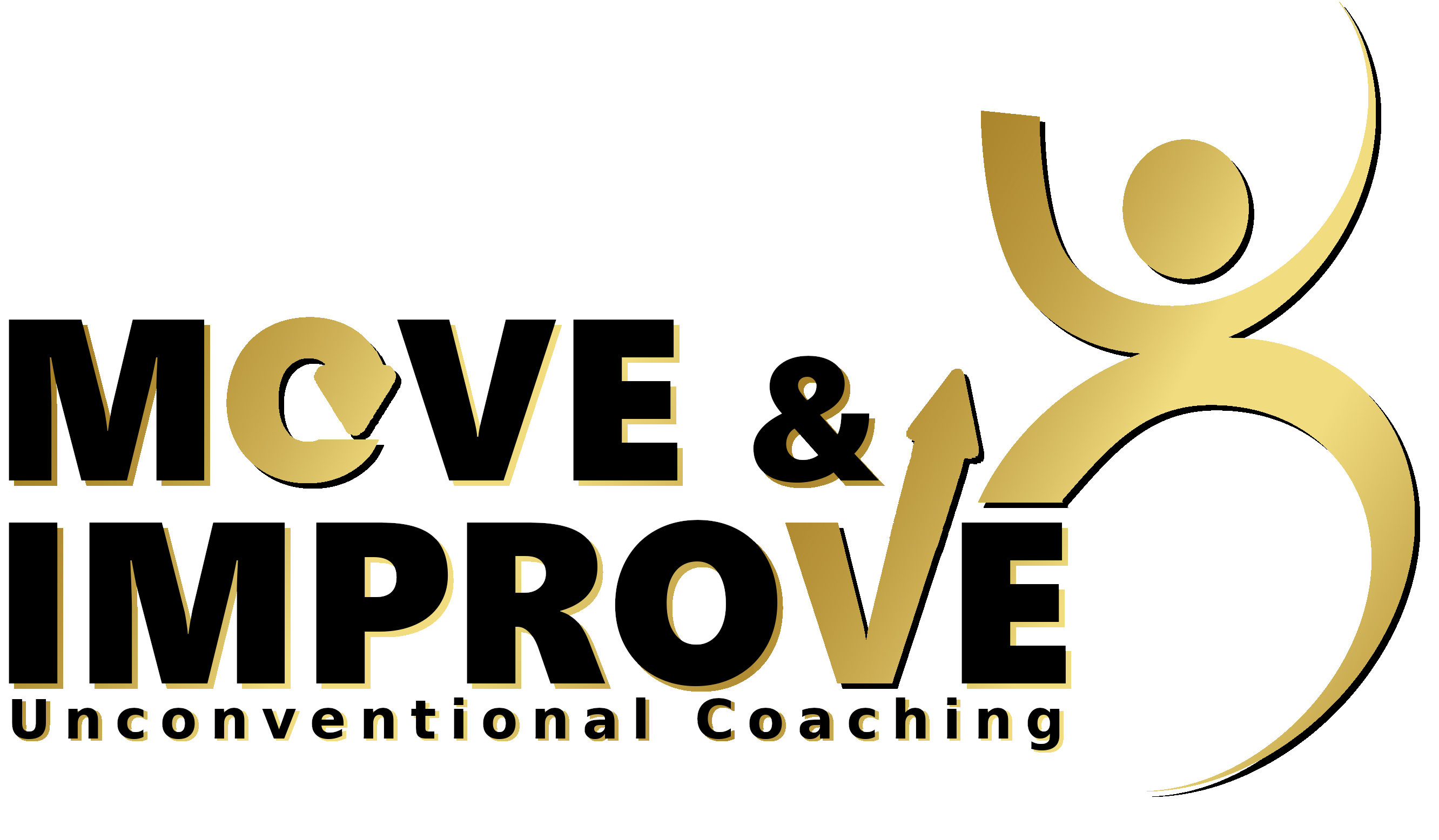Introduction
Doing nothing, being "bored" is healthy. Searching distraction, avoiding the tasks ahead, that is procastination. Avoiding the what needs to happen anyways. Making it harder on yourself by putting it off, over and over and over again
The power of language
When we think of our TO-DO lists, we most often say and think: I have to do this, this must be done. I have to do the dishes, I need to finish this text today. All those expressions include a form of obligation, forcing. That causes a natural resistance. We, after all, want to be able to choose, have the impression we have the liberty to choose. And if we can't we tend to rebel.
So basically, we're rebelling against ourselves. We want something, so we give ourselves assignments. I have to, I need to, this must be. And that causes us to rebel, against ourselves!
What if we'd switch around our language. Instead of: I have to; I choose to. I choose to do the dishes, I choose to finish this text today. That puts choice AND responsibility in our shoes.
Just as well as it is super powerful to choose wasting time. I choose to scroll on social media, I choose binge watch. We're not being forced, here as well, owning our distractions and our choices is super powerful. Acknowledge to yourself you're choosing to be at the effect of your own subconscious thoughts and beliefs instead of choosing actively for what you want and become the cause of change.
Ditch the TO-DO list
TO-DO lists are endless long and a perfect invitation for overwhelm and procastination. No option seems to be good, so you need time to figure out what the right option is to start with, correct?
Instead, order your tasks according to urgency and importance.
You start your day with 3 tasks that are Urgent and Important. once you've ticked off 3, you can do some important but less urgent or less important but urgent tasks.
Consider dropping the non important, non urgent tasks or delegate them to someone else.
So yes, you first do some of the most important tasks and the "busy-but-less-important" tasks you might like better, are a reward.
Tasks might shift though, be aware of that. Something that's in urgent and important but does not get done, clearly is not urgent and important. Just as some things that weren't urgent but haven't been done for a while, might become urgent.

Got stuck? Break state!
Yes, go out, do something else, move, literally move. Instead of being stuck on the same issue for 10, 20, 60 minutes, break state. Go do something else that really pulls you out of whatever you were doing.
I used to get the most brilliant idea's when showering. Another awesome idea is a Double-End-Bag. That's basically a boxing ball with elastic bands attached to the top and the bottom. So when you hit it, it moves unpredictably and has a tendency to "hit back". If you don't focus on the here and now, you get hit in the face!
And of course, nowadays, there is Evy to pull me back into the here and now. No better way to break state than to play with your pets, children, ... .
Bonus: remove distractions and give yourself a certain amount of time
It seems pretty trivial to mention, yet so many fail at it. Put your phone on airplane mode or disable notifications. Don't have your social media open on your computer. Consider a time and website blocking plugin in your browser to make yourself super aware of breaking your own rules (Leechblock is the one I use).
Also, avoid doing huge bursts of work. The pomodoro technique starts from giving yourself a 20 to 30 minute active time. That's followed by a 5 minute break: bathroom, coffee, .... . Repeat that 2 more times except that the 3th break can be longer, 20 to 30 minutes. Use that time to move, be active.
When you want to stop threatening the symptoms and work with the real cause of procastination
All of the above steps are steps to manage the symptoms, the behaviour of procastination. The real question is: why do you do it in the first place? Why are you rebelling against what you want to be done?
The answer lies in our subconscious mind. When we're procastinating, we're avoiding being confronted with whatever limiting belief or unprocessed emotion is living in the subconscious mind. So instead of trying to control this "running away behavior", the better solution is to have a deep look at where we're running away from. Remove the cause and the symptom will disappear with it.
Do you want to have an estimate of your procastination risk? Do the inner conflict scan. The higher you score, the bigger your risk for some serious procastination!
